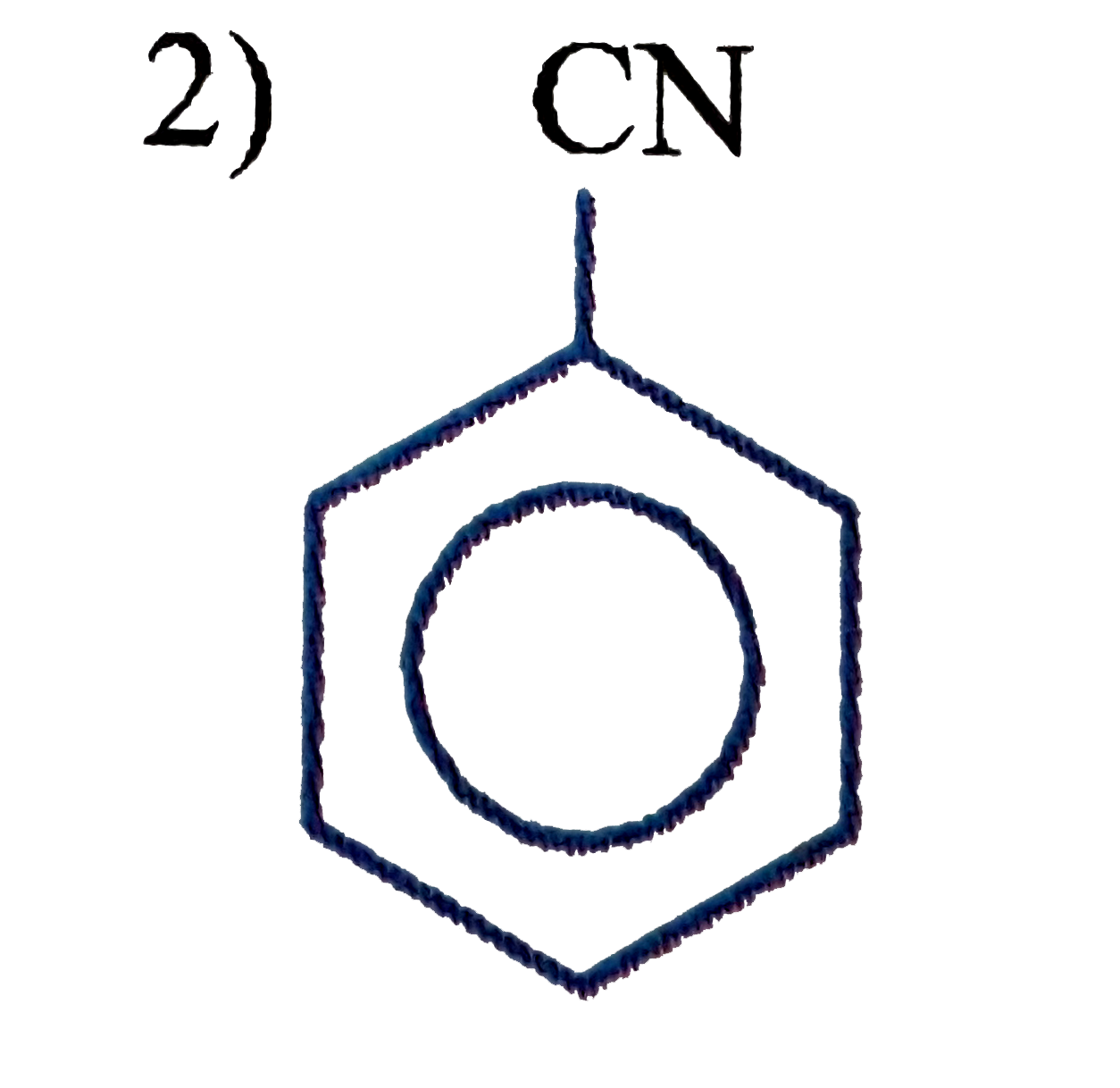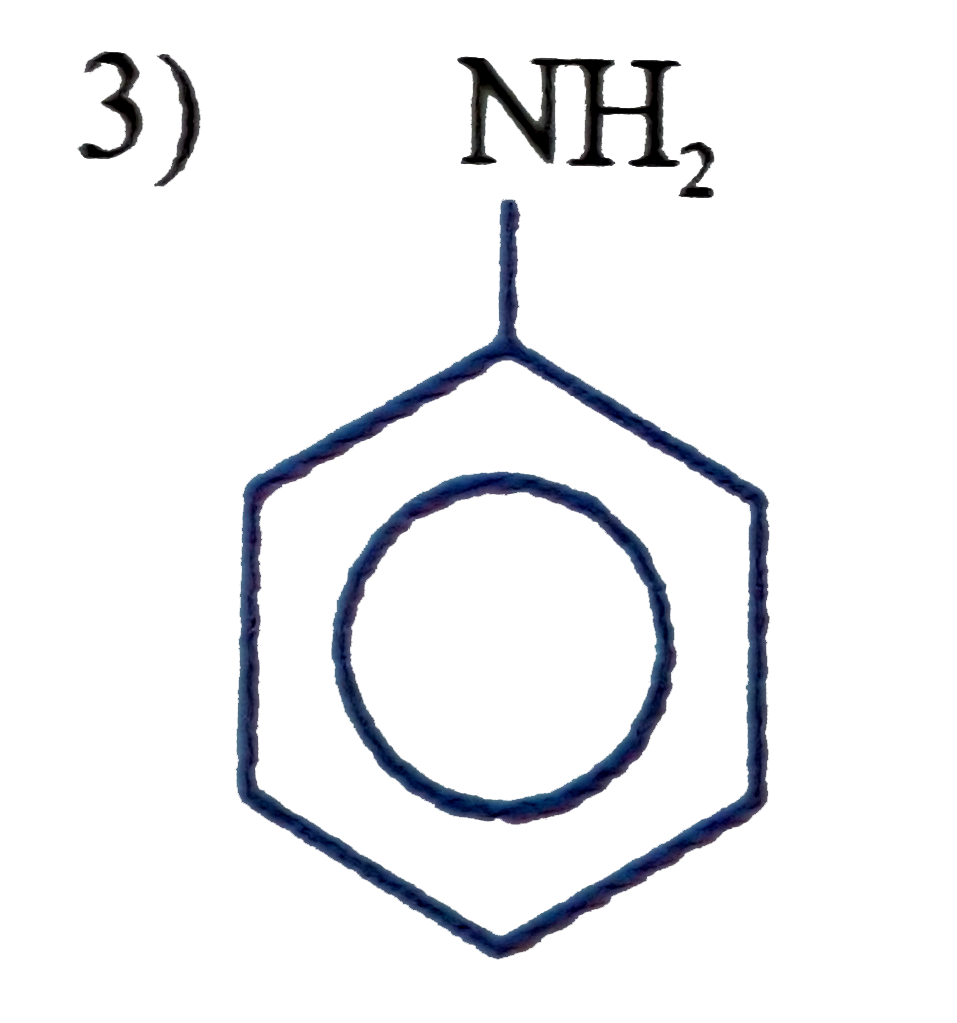An organic compound 'A' on heating with concentrated H2SO4 forms a compound 'B' which on addition of one mole of hydrogen in presence of Ni forms a compound 'C'. One mole of compound 'C' on combustion forms two moles of CO2 and three moles of H2O.
When 'B' and 'C' are added separately to the test tubes conrtaining orange-brown liquid 'X', the colour disappears in case of 'B' but remains same in case of 'C'. The name of the liquid 'X' and the substance responsible for colour change are respectively
alkaline KMnO4 solution and ethanoic acid
alkaline KMnO4 and ethanol
bromine water and 1, 2-dibromoethane
bromine water and 1, 1, 2, 2-tetrabromoethane.
The correct Answer is:C
When unsaturated hydrocarbons react with bromine water (organe-browm liquid), the orange-brown colour disappears. This is the test for unsaturation. Saturated hydrocarbons do not give this test i.e., do not decolourise bromine water. Therefore, .C. will not decolorise bromine water. Thus, liquid X is bromine water.
CH2=CH2(B)+Br2−water→H−C∣C∣Br−C∣C∣Br−H1,2−Dibromoethane
Topper's Solved these Questions
- CARBON AND ITS COMPOUNDS BOOK - MTG IIT JEE FOUNDATIONCHAPTER - CARBON AND ITS COMPOUNDS EXERCISE - Integer/Numerical Value Type
5 Videos
- ATOMIC STRUCTURE BOOK - MTG IIT JEE FOUNDATIONCHAPTER - ATOMIC STRUCTURE EXERCISE - Exercise (Integer/Numerical Value Type)
5 Videos
- CHEMICAL BONDING BOOK - MTG IIT JEE FOUNDATIONCHAPTER - CHEMICAL BONDING EXERCISE - Exercise (Integer/Numerical Value Type )
5 Videos
Similar Questions
An organic compound A on heating with concentrated H2SO4 forms a compound B which on addition of one mole of hydrogen in presence of Ni forms a compounds C. One mole od compound C on combustion form two moles of CO2 and three moles of H2O. Identify the compounds A,B and C write the chemical equation of the reactions involved.
View SolutionAn organic compound A on heating with concentrated H2SO4 forms a compound B which on addition of one mole of hydrogen in presence of Ni forms a compounds C. One mole od compound C on combustion form two moles of CO2 and three moles of H2O. Identify the compounds A,B and C write the chemical equation of the reactions involved.
View Solution
Knowledge Check
An organic compound 'A' on heating with concentrated H2SO4 forms a compound 'B' which on addition of one mole of hydrogen in presence of Ni forms a compound 'C'. One mole of compound 'C' on combustion forms two moles of CO2 and three moles of H2O.
Which of the following represents the compound 'C' ?AC2H6, a saturated hydrocarbonBC2H4, an unsaturated hydrocarbonCHCOOH, an unsaturated acidDC2H5OH, a saturated alcoholAn aromatic compound 'A' on treatment with aqueous ammonia and heating forms compounds 'B' which on heating with Br2 and KOH forms a compound 'C' of molecular formula C6H7N.
The compound 'B' isA B
B C
C D
D
An aromatic compound 'A' on treatment with aqueous ammonia and heating forms compounds 'B' which on heating with Br2 and KOH forms a compound 'C' of molecular formula C6H7N.
The conversion of B to C isAHoffmann bromamide degradation reactionBBromoform reactionCWurtz fitting reactionDHoffmann mustard oil reaction
An organic compound A on heating with concentrated H2SO4 forms a compound B which on addition of one mole of hydrogen in presence of Ni forms a compounds C. One mole od compound C on combustion form two moles of CO2 and three moles of H2O. Identify the compounds A,B and C write the chemical equation of the reactions involved.
View SolutionAn organic compound 'X' on heating with conc. H2SO4 forms a compound 'Y' which on addition of one molecule ofhydrogen in the presence of nickel forms a compound 'Z'. One molecule of compound 'Z' on combustion forms two molecules of CO2 and three molecules of H2O. Identify, giving reasons the compounds X,Y and Z. write the chemical equations for the reactions involved.
View SolutionAn organic compound 'X' on heating with conc. H2SO4 forms a compound 'Y' which on addition of one molecule ofhydrogen in the presence of nickel forms a compound 'Z'. One molecule of compound 'Z' on combustion forms two molecules of CO2 and three molecules of H2O. Identify, giving reasons the compounds X,Y and Z. write the chemical equations for the reactions involved.
View SolutionAn organic compound A reacts with sodium hydroxide to form a compound B. B when heated with sodalime forms a compound B. B when heated with sodalime forms a compound C.One mole of C burns in oxygen to produce one mole of CO2 and two moles of H2O. Identify A, B and C.
View SolutionThe combustion of one mole of a compound yields 3.0 moles of CO2, and 4.0 moles of H2O. The empirical formula of this compound is.
View Solution
